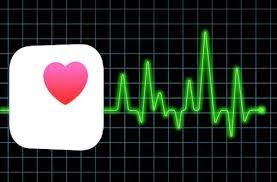Big news in the technology world – the Apple Watch was unveiled for the first time, and it’s expected to arrive on shelves in 2015. Of the multitude of fascinating features, one aspect that is getting a lot of attention is the iWatch’s ability to track physical activity and provide integrated fitness/activity apps to help guide your progress. You may find yourself asking – is this something that iWant? that iNeed? Will iBenefit?? Can iTrust it??
While there are many fitness apps out there, here’s what catches my attention: the iWatch can measure your heart rate, and your total body movements (via an accelerometer). It also uses the GPS and wifi in your iPhone to track how far you’ve moved. There’s a little circular icon that fills up each day as you move – even letting you know how many minutes you have stood during the day.
Pretty nifty that you can now track your activity, heart rate, and personal info all together in one internet-linked system. I also really like the encouraging nature of the movement icons filling up, with Apple’s stated goal to be ‘Sit less, move more, and get some exercise by completing each ring each day.’
There are rumblings as well that the iWatch will someday be able to check blood sugar without poking the skin. (Currently, the closest a diabetic can get to this is with a continuous glucose monitor, which still requires that a sensor is worn under the skin, and it has to be calibrated against the standard finger-poke twice a day. There is also a brand new technology just approved in Europe early this month, whereby a small round sensor is placed on the skin with a small filament that is inserted just under the skin; a reader is scanned over the sensor to get a glucose result. More on this on drsue.ca soon – stay tuned.) As testing blood sugars can be painful and frustrating for my diabetic patients, this news not only got me sitting up, but also spiked my own heart rate to well over 100.
With real time, painless monitoring of these parameters, I get carried away into a dream land where patients could be monitored in second-to-second real time with internet data transmission to their family members, caregivers, or health care professionals anywhere in the world… do I dare to dream?? (editorial note: there are a number of established glucose monitor companies working on this for blood glucose monitoring, in various stages of development)
Before we get carried away, though, we need a lot of questions answered. How have they validated their technology? How accurate is their accelerometer? How accurate is the heart rate monitor? Can the heart rate monitor pick up irregularities and notify the patient or caregiver? If they are going to incorporate a blood glucose monitor, how will this be tested and validated for precision and accuracy? I suspect these details and information will become available as the iWatch unfolds into the marketplace, but if we as people, patients, and health care professionals are going to trust the data, we need to know that the studies have been done to prove that it is worthy of our trust.
Definitely exciting, though – my eyes will be focussed on these interesting developments in health technology.
Thanks to Glenn for the heads’ up, and to Anita Dobson for her input!












